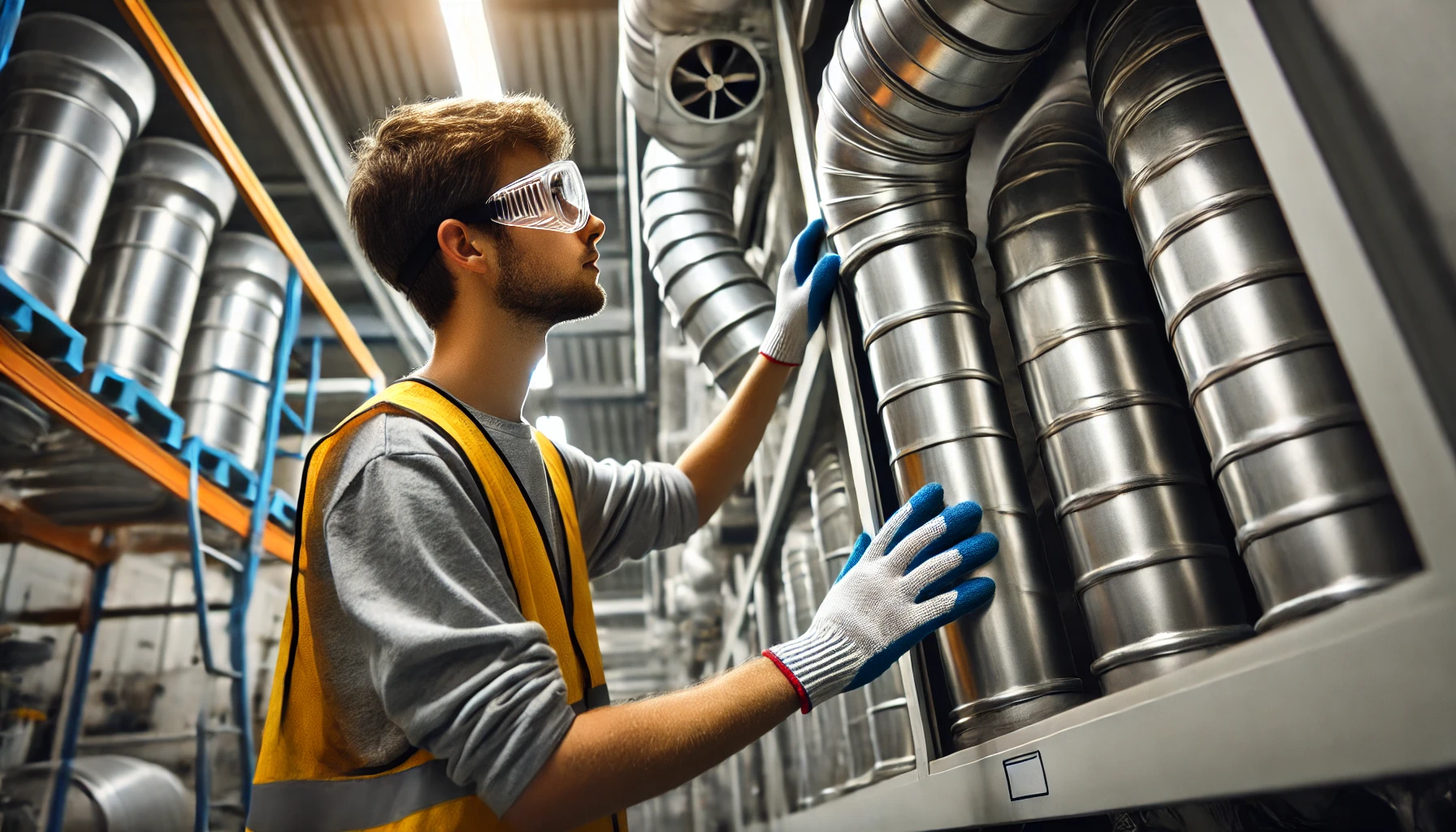Routine LEV Inspection – Why it is so Important?
Local Exhaust Ventilation (LEV) systems play a critical role in maintaining safe working environments, particularly in industries where hazardous substances are present. Understanding the importance of these systems and how to maintain them through routine inspections is crucial for both safety and compliance.
Overview of Local Exhaust Ventilation (LEV)
Local Exhaust Ventilation (LEV) systems are designed to capture and remove airborne contaminants at the source before they can spread into the workplace environment. These systems typically consist of a hood, ducting, an air cleaning device, and a fan.
By effectively controlling and extracting harmful substances such as dust, fumes, vapors, and gases, LEV systems protect workers from exposure to hazardous pollutants that can cause serious health issues.
LEV systems are commonly used in industries such as manufacturing, chemical processing, and construction, where workers are regularly exposed to hazardous materials. A well-maintained LEV system ensures that these contaminants are efficiently removed, reducing the risk of respiratory illnesses, skin conditions, and other occupational health hazards.
Why Routine LEV Inspection is Important
Routine inspections of LEV systems are essential for several reasons:
- Ensuring Efficiency – Over time, LEV systems can become less effective due to blockages, wear and tear, or malfunctioning components. Regular inspections help to identify these issues early, ensuring the system continues to operate at peak efficiency.
- Compliance with Regulations – Many industries are subject to strict regulations regarding air quality and worker safety. Routine LEV inspections help businesses comply with these regulations, avoiding potential fines and legal action.
- Prolonging System Life – Regular maintenance through inspections can extend the life of an LEV system by preventing major breakdowns and costly repairs. Addressing minor issues during routine checks can save significant time and money in the long run.
- Protecting Worker Health – The primary purpose of an LEV system is to protect workers from harmful substances. Routine inspections ensure that the system is functioning properly, thus safeguarding the health and well-being of employees.

How to Conduct Monthly LEV Inspection
Conducting a monthly LEV inspection is a straightforward process that can be managed with proper planning and knowledge. Here’s a step-by-step guide:
- Visual Inspection – Begin by visually inspecting the entire LEV system, including the hood, ducting, filters, and fans. Look for any visible signs of damage, such as cracks, loose connections, or corrosion. Check that all components are securely fastened and in good condition.
- Airflow Measurement – Use an anemometer to measure the airflow at the capture hood. Compare the readings with the system’s design specifications to ensure that it is capturing contaminants effectively. Any significant drop in airflow could indicate a blockage or issue with the fan.
- Filter Check – Inspect the filters to determine if they need cleaning or replacement. Clogged or dirty filters can reduce the efficiency of the LEV system, leading to poor air quality.
- Ductwork Examination – Check the ductwork for any obstructions or build-up of contaminants. Ensure that the ducts are properly sealed and free of leaks, which can reduce the system’s overall effectiveness.
- Fan Operation – Listen to the fan for any unusual noises that could indicate a problem, such as worn bearings or loose parts. Make sure the fan is operating smoothly and at the correct speed.
- Record Keeping – Document all findings from the inspection, including any actions taken or repairs needed. Keeping detailed records helps track the performance of the LEV system over time and ensures compliance with regulatory requirements.
Tools Needed for Routine LEV Inspection
To conduct an effective LEV inspection, you’ll need the following tools:
- Anemometer – For measuring airflow velocity at the capture hood.
- Smoke Tubes or a Smoke Generator – To visualize the airflow and ensure the LEV system is capturing contaminants effectively.
- Pressure Gauges – For checking the static pressure within the ductwork, which can indicate blockages or leaks.
- Inspection Mirror – To view hard-to-reach areas of the system, such as inside the ductwork or behind the fan.
- Screwdrivers and Wrenches – For tightening any loose connections or replacing components.
- Personal Protective Equipment (PPE) – Including gloves, safety glasses, and respiratory protection, as necessary, to protect yourself during the inspection.
Routine inspections of Local Exhaust Ventilation systems are crucial for maintaining a safe and compliant workplace. By understanding the importance of these inspections and following a systematic approach, you can ensure that your LEV system continues to operate effectively, protecting workers from hazardous substances.
Regular maintenance not only enhances system performance but also prolongs the life of the equipment, ultimately saving time and resources.
